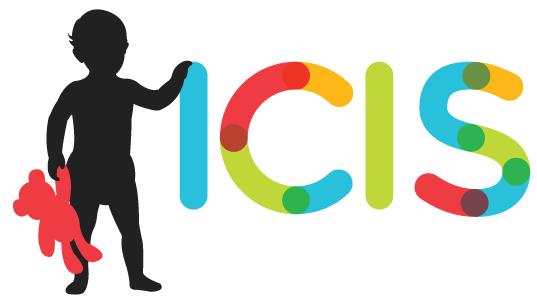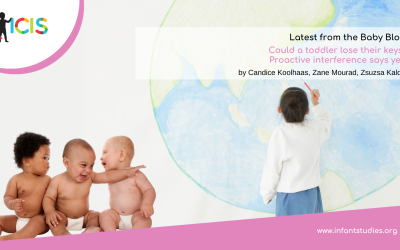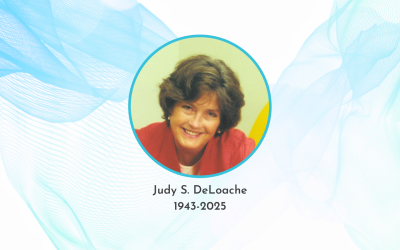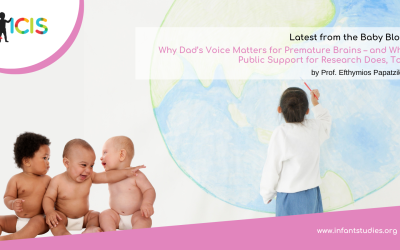by Audun Dahl
When I started graduate school, I knew little about the everyday life of infants. I had only the vaguest ideas about the daily joys and woes of a 12-month-old—even one who lived a block from our infant research lab in Berkeley, CA. The laboratory experiments I read about in journal articles didn’t teach me about the lives of infants; they brought infants to researchers’ labs, not researchers to infants’ homes. With the encouragement of my advisor, this predicament led me to do naturalistic research: videotaping infants in their home environments. We wanted to study infants doing whatever they would have been doing if we weren’t there.
To see the need for naturalistic research, let’s imagine that we discovered a new species of sociable aliens on Mars. As scientists, we wanted to understand the new species, but we faced a dilemma. The aliens were perfectly willing to come along back to Earth and participate in laboratory research here. Yet, by bringing the Martians to our planet, we would learn nothing about how they developed under the unique conditions on Mars. How did they learn to walk on their red planet, where surface gravity is less than half of gravity on Earth? How did they learn to communicate with others in their Martian households?
The solution to this methodological dilemma seems clear: Do both. We would do laboratory research on Earth and field research on Mars. This is the approach animal researchers take when they combine field and laboratory research to understand earthly species. The laboratory studies would examine causal processes of perceptions, emotions, and actions using carefully designed experiments; the naturalistic observations would document everyday experiences and activities. Together, these two methodologies would build a science of how Martians developed.
But the need for naturalistic research has not been as widely recognized in psychological research on infants and children—nor adults, for that matter. By reading textbooks and taking classes on research methods, psychology students can come away believing that experiments, not naturalistic observations, are the “gold standard” of research. Laboratory experiments with random assignment control the environments of research participants, rule out confounds, and—it is implied—offer the safest road to knowledge about infants.
Several factors tempt us to skip naturalistic methods in research on human infants. First, it’s easy to think that we already know enough about what infants do and experience. After all, we, too, were infants once. Many of us have observed infants in our homes, either infant siblings, infant nieces and nephews, the infants of our friends, or our own infants. A second reason is practical. Naturalistic research is time-consuming and typically generates hundreds or thousands of hours of unstructured recordings. In some of our naturalistic studies, we are looking for behaviors—such as hitting others—that only happen once or twice per hour of normal interactions. We wouldn’t want to do naturalistic research unless we had to.
The problem with skipping naturalistic methods is that our intuitions about everyday life are often wrong, or at least idiosyncratic. When we use our own experiences to generate intuitions about everyday life, we are essentially doing unsystematic case studies. This is a sensible way to
start a research program, but usually not a good way to complete it. Case studies have a venerable history in developmental psychology—carried out by founding figures like Darwin, Freud, and Piaget—yet every psychology major has heard of their shortcomings. One infant differs from the next. One person’s recollection differs from another’s, and both may differ from what actually happened. I have seen the same claim about infants’ everyday experiences be described as obviously true by one reviewer and obviously false by another. Intuitions about everyday experiences are about as disparate as human life is diverse; insofar as researchers come from privileged backgrounds, their intuitions will likely reflect the biases and inequities associated with those backgrounds. To separate the right intuitions about everyday lives from the wrong ones, we need data. Naturalistic methods offer a way of getting those data.
Consider research on infant helping. In the past two decades, developmental scientists have debated why infants begin to help others. In 2006, Science published a groundbreaking paper by Felix Warneken and Michael Tomasello. They found that most 18-month-olds helped an unfamiliar adult, for instance by handing back a dropped pen or paperclip to the adult. One key question was whether infants developed the ability to help others without any encouragement, praise, or other kinds of support from caregivers. One possibility was that infants began to help before their caregivers encouraged helping. Another possibility was that caregivers actively encouraged helping from around the age when infants began to help. This fundamental question about the origins of human prosociality cannot be settled by laboratory experiments as it concerns what happens in children’s daily lives. These lives—needless to say—do not take place in laboratories. To know whether or how caregivers encourage infants to help, we conducted naturalistic observations and parent interviews with families around the San Francisco Bay Area in Northern California. It turned out that, already by the first birthday, the parents in our studies frequently encouraged their infants to help by putting toys away after a play session, cleaning a surface, or even watering plants. In most of the situations in which infants helped, they received encouragement, praise, thanking, or some combination thereof from their caregivers. (Note that neither naturalistic nor experimental methods are sufficient by themselves: In addition to the naturalistic evidence on caregiver encouragement, we needed experimental evidence to know that adult encouragement actually had a causal effect, increasing infants’ helping.) Scholarly debates about the origins of infants’ helping offer just one illustration of how key questions about infant development call for naturalistic data about infants’ everyday lives. Calls for naturalistic methods have a history. Decades ago, Urie Bronfenbrenner, Alfred Baldwin, and others argued for the importance of studying children’s everyday social contexts. Around 1980, perhaps reflecting the influence of these scholars, 2-3 percent of articles in major developmental psychology articles contained the word “naturalistic” in their title, abstract, keywords, or other descriptors. Any effects of these admonitions seem to have waned, however. In the period from 2007 to 2017, the percentage of “naturalistic” articles had dropped below one percent.
Today, the future looks brighter for naturalistic methods. Technological advances have made naturalistic research both richer and less time-consuming. Automated recording devices for
speech, portable head-mounted cameras, and automated video processing all make it more manageable to collect and analyze large amounts of unstructured audio and video data. Thanks to more portable recording technology, such as the LENA devices for recording language input and children’s vocalizations, researchers collect naturalistic data from infants’ homes without even being there. By leveraging technological advances to record and analyze rich observational data, developmental scientists have made major contributions to our understanding of infants’ visual attention, word learning, and movement patterns.
Early in the 20th century, many countries used a gold standard to regulate their money. In the United States, the gold standard meant that a dollar could be converted into a fixed amount of gold. The gold standard was eventually abandoned, but not until it had hamstrung the central banks, exacerbating the Great Depression. Despite the demise of the actual gold standard, the metaphorical gold standard has remained a term of praise for experimental methods. But the field of developmental science may no longer need a methodological gold standard—if it ever did. Instead, a developmental science that judiciously combines experimental, naturalistic, and other tools can capitalize on the strengths of each.
Still, naturalistic methods hold a unique position in our toolbox, whether we study infants or Martians. Developmental research questions are nearly always about what happens in children’s everyday lives. How do infants learn language? How does locomotion affect cognitive development? Why do infants begin to hit and help others more from the first to the second year? Infants do not typically acquire language, begin to crawl, or change their tendencies to hit or help others inside the confines of a laboratory. Rather, these processes mainly occur in the homes, playgrounds, daycare centers, and other places where infants spend their days. When we bring infants into the lab, we wish to shed light on developmental processes that typically occur outside the laboratory. When we study infants’ everyday lives in their homes, we directly observe the very phenomena we ultimately seek to understand.
About the Author

Audun Dahl
University of California, Santa Cruz
Audun Dahl is an Associate Professor in Psychology at the University of California, Santa Cruz. He studies moral development from infancy to adulthood. Using behavioral experiments, naturalistic observations, structured interviews, and surveys, his lab does research on everyday helping and harming in infancy, and the development of reasoning, judgments, emotions, and actions around moral and other norms among children, adolescents, and adults.




